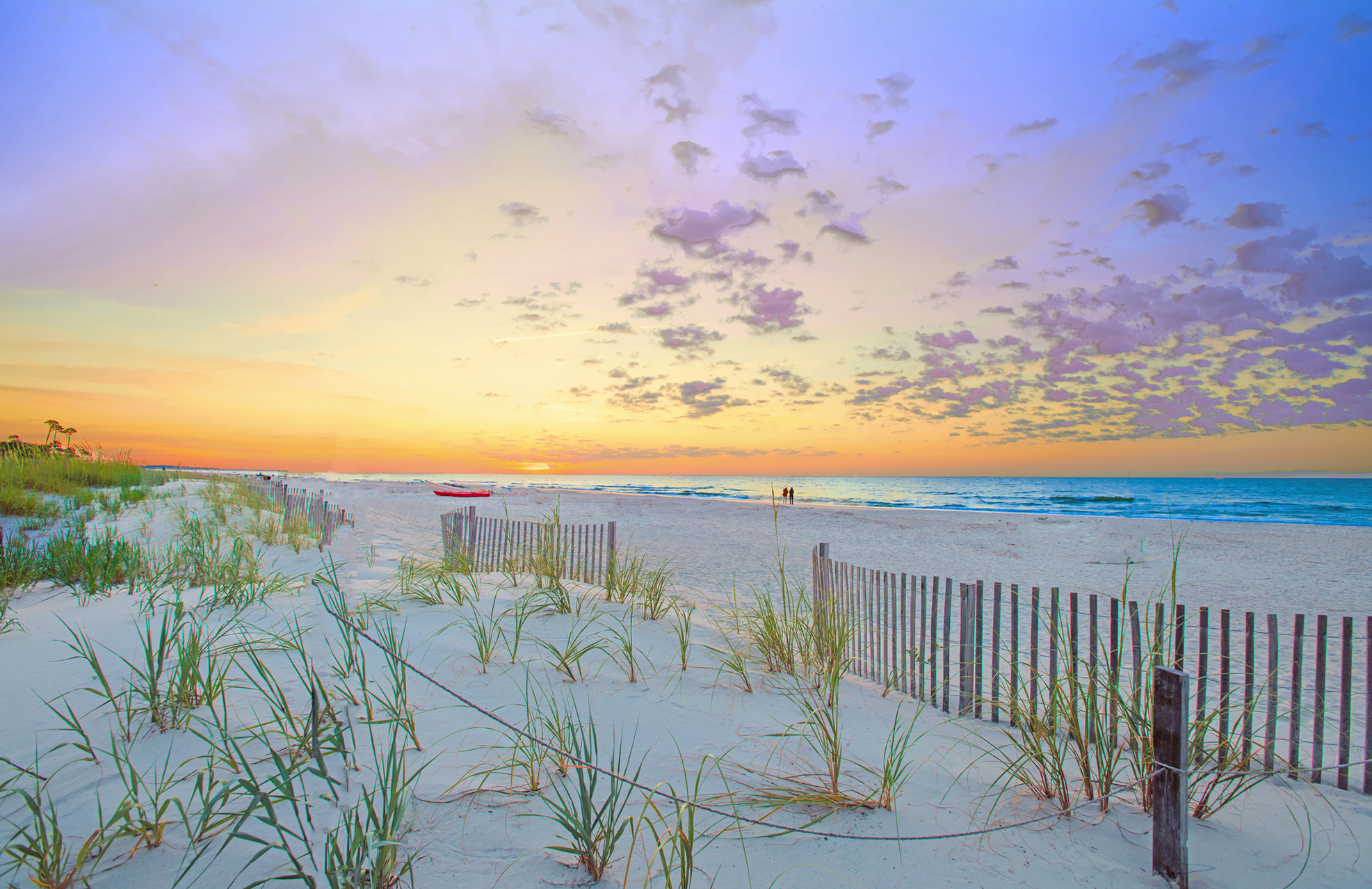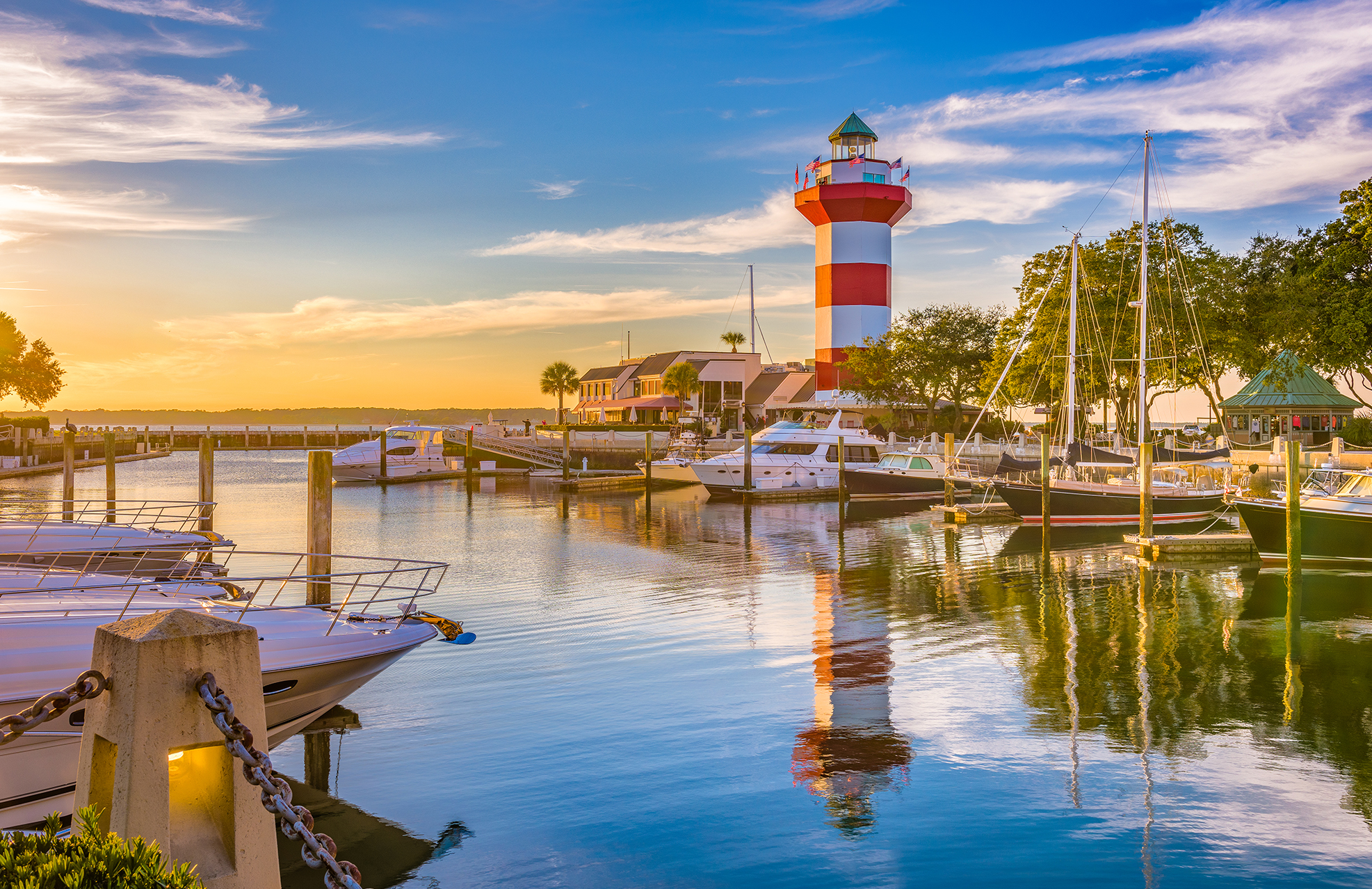Explore Hilton Head Island with Outdoor Activities in Nature
If you crave sunset strolls on the beach, bike rides along the shore, and trails lined with Spanish-moss tree canopies, a Hilton Head Island vacation may suit you.
The island was ranked No. 3 for Best Island in the Continental U.S. by Travel + Leisure magazine, and No. 1 Island in the U.S. by Conde Nast Traveler. And it’s no wonder why — the island boasts some of the best beaches, which can be enjoyed most of the year due to the temperate climate.
From hiking, biking, and horseback riding on land to boating, kayaking, and fishing on the water, your Hilton Head vacation offers an abundance of ways to get outdoors and breathe in the refreshing South Carolina air.
HIKE UNDER THE ANCIENT OAKS
Sandy shorelines and paths lined with oak trees showcase the island’s natural beauty on a Hilton Head hike. Pinckney Island National Wildlife Refuge, located just minutes from Hilton Head Island, offers an up-close look at the Lowcountry marshland and diverse wildlife over more than 14 miles of trails. For a shorter walk, visit the Jarvis Creek Park, a 1-mile loop dotted with birds and nature; or the Audubon Newhall Preserve, where you’ll find a pond with benches and placards describing the local wildlife.
Visitors seeking a picture-perfect spot to hike will enjoy a trip to Sea Pines Forest Preserve. This 605-acre space is near both Harbour Town and the South Beach Marina and features flower fields and four lakes.
In addition to the nature preserves, Burkes Beach — home to a seaside trail — is one of Hilton Head Island’s best-kept secrets. Here, you can experience “The Folly,” where ocean water flows into a salt marsh, creating a temporary creek at high tide.
Hilton Head Island
EXPLORE THE ISLAND’S BEACHES
Sand, warm water, and South Carolina sunshine await at the beach on Hilton Head Island. Home to more than 12 miles of shoreline, the island has been recognized as one of the top spots for family beaches in the country.
While Coligny Beach is the most popular beach destination, other spots offer a more laid-back experience with fewer people. Mitchelville Beach, where the forest meets the sea, is off the beaten path, but offers the perfect spot for coastal hiking and kayaking. Folly Field Beach, which is north of Burkes Beach, offers flat, firm sand ideal for making sandcastles with the family. It’s also a great place to bike; you can follow the beaches north or south to discover more of the island’s natural beauty. South Forest Beach offers many of the same amenities as Coligny Beach, but with fewer crowds. Lay out a beach towel, get a healthy dose of sunshine, and enjoy a tropical drink from the nearby Pool Bar Jim’s.
FIND ADVENTURE ON THE WATER
Situated on the Atlantic Ocean and Intracoastal Waterway, Hilton Head Island offers both incredible beaches and an ideal home base from which to enjoy the water’s bounty. Whether you prefer to cast a line off the dock or sport fish on the ocean, you’ll find the island is a popular shrimping and crabbing destination. There are plenty of fishing charter boats that cruise to the Gulf Stream and the Atlantic Ocean waters, where you’ll find snapper, grouper, bluefish, sharks, and more. Inshore, there’s sea trout, croakers, and flounder.
If you enjoy being on the water but don’t want to fish, there are excursions available in all sizes, from sailboats to yachts. Take a sunset sail. Embark on a dolphin-watching adventure. Or take a fulfilling eco-tour to learn about the island’s wildlife. There are six marinas with boat rentals, so you can find the ideal activity for you and your family. 
Your day on the links will feature quintessential Hilton Head views.
TRY THREE DIFFERENT TYPES OF GOLF
Since 1962, golf has been a staple of the Hilton Head lifestyle. The island is home to more than 24 championship courses and hosts some of the world’s top golf events, including the PGA Tour. Public and private courses feature designs by golf architects, such as Pete Dye; Robert Trent Jones, Sr.; and Jack Nicklaus. Best of all, your day on the links will feature quintessential Hilton Head views — sandy beaches, the shimmering ocean, and Spanish-moss-draped oak trees.
Vacationing with kids? Consider a day on a miniature golf course. Nearby options include the Paradise Falls and Lost Lagoon courses at Adventure Cove Miniature Golf & Arcade, two 18-hole courses complete with scenic waterfalls and landscaping at Legendary Golf, and a themed escape with bridges and lost treasure at Pirate’s Island Adventure Golf.
There’s also a course for FootGolf, best thought of as a hybrid of golf and soccer. Kick a ball into a 21-inch cup in as few kicks as possible across nine holes at Port Royal Golf & Racquet Club, the island’s first FootGolf course.
TAKE A HORSEBACK RIDE ALONG THE BEACH
Saddle up for an up-close view of South Carolina’s wildlife. Riders of all skill levels can enjoy a 1-hour, Western-style trail ride with Lawton Stables. Knowledgeable guides will take riders through the Sea Pines Forest Preserve to see wildlife, such as snowy egret birds and yellow-bellied slider turtles sunning on the banks of the lagoons.
For a day-long excursion, consider a trip to the charming boutique stables at Daufuskie Trail Rides. Daufuskie, a historic community home to nearly 400 residents, is accessible via a 1-hour ferry ride from Hilton Head. Guides will take visitors on private horseback tours along 3 miles of pristine white sands, tailored to meet each rider’s skill level and comfort.
As an Owner, you have access to eight Marriott Vacation Club resorts on Hilton Head Island. Options include 2- and 3-bedroom villas with full kitchens, so you can enjoy more space — both outdoors and at your home-away-from-home.
Actual experiences will be provided via contractual arrangements with third-party providers and may require the payment of additional fees. The experiences described herein are examples of potential vacation opportunities and are subject to change.


